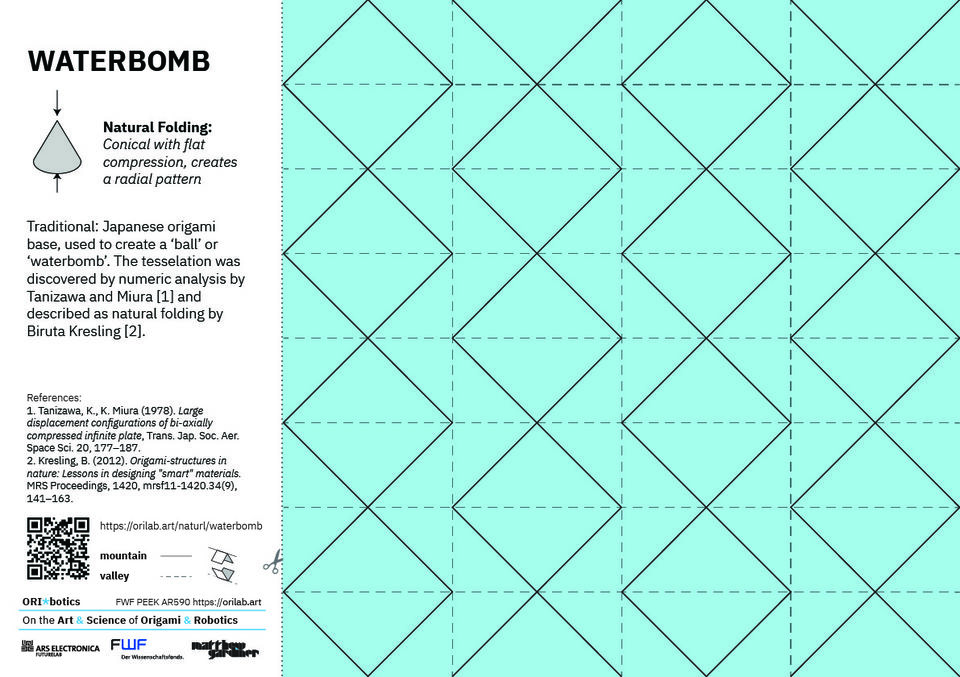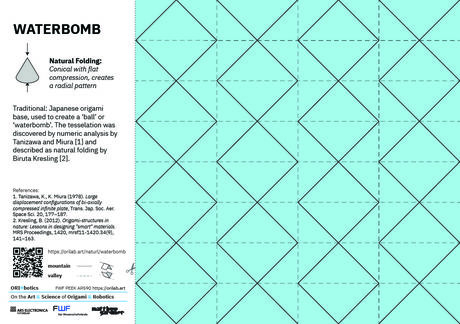

Waterbomb
The waterbomb is so-named from a traditional Japanese inflatable ball-like design. The tesselation itself appears to have several origins in literature. Biruta Kresling, however, discovered a method for creating the pattern via natural folding. The experiment was inspired by pinecones and found that a conical shell, when pressed flat, resulted in the waterbomb pattern [1]. The waterbomb has been used for a patented heart-stent design by Kaori Kuribayashi and Zhong You [2]. Matthew Gardiner found that a radial version of the pattern created a beautiful curved surface in oribotics [the future unfolds] [3] during an artistic residency in the Ars Electronica Futurelab. Marco Salerno has recently applied the waterbomb to a 3-degree-of-freedom "origami wrist" for microsurgery [4].[1] Kresling, B. (2012). Origami-structures in nature: Lessons in designing "smart" materials. MRS Proceedings, 1420, mrsf11-1420.
[2] Kuribayashi, K. (2004). A Novel Foldable Stent Graft. Univesity of Oxford.
[3] Gardiner, M. (2011). Oribotics: The Future Unfolds. In Patsy Wang-Iverson, Robert J. Lang, and Mark Yim (Ed.), Origami 5: Fifth International Meeting of Origami Science, Mathematics, and Education. CRC Press.
[4] Salerno, M., Zhang, K., Menciassi, A., & Dai, J. S. (2016). A novel 4-DOF origami grasper with an SMA-Actuation system for minimally invasive surgery. IEEE Transactions on Robotics, 32(3), 484–498. https://doi.org/10.1109/TRO.2016.2539373
This work is was produced with funding from FWF PEEK Grant AR590 and presented in the Ars Electronica Center Material Lab as part of the 25th Anniversary of the Ars Electronica Futurelab.

Waterbomb-ori
Geometry: cone
Force: flat-plane axial compression

